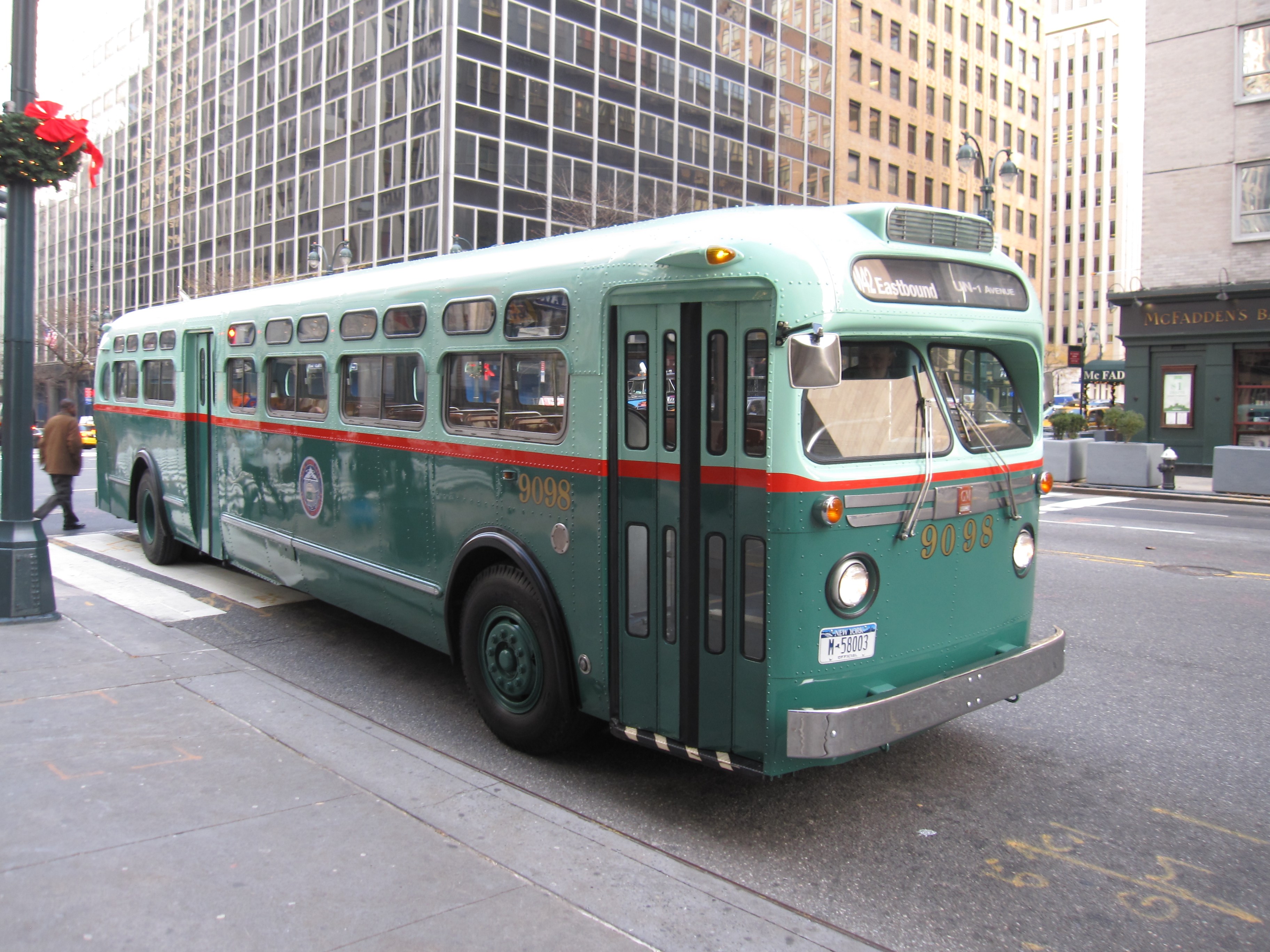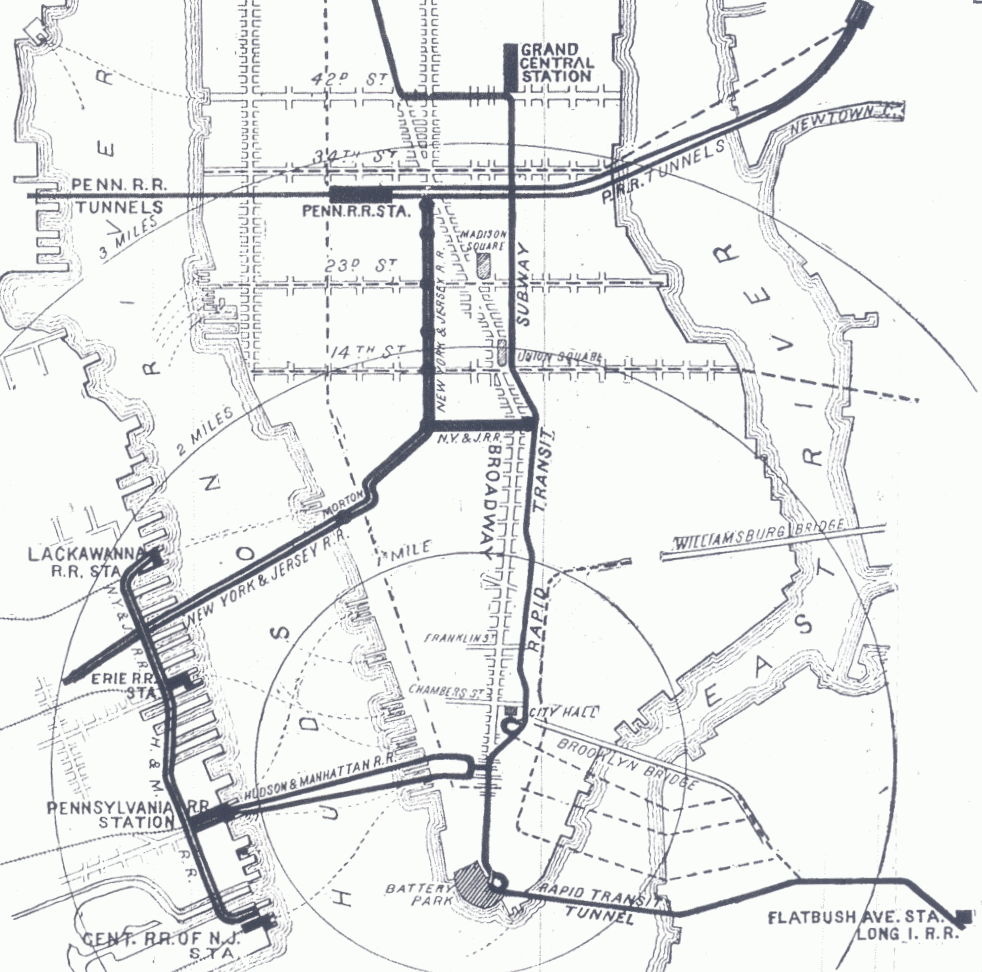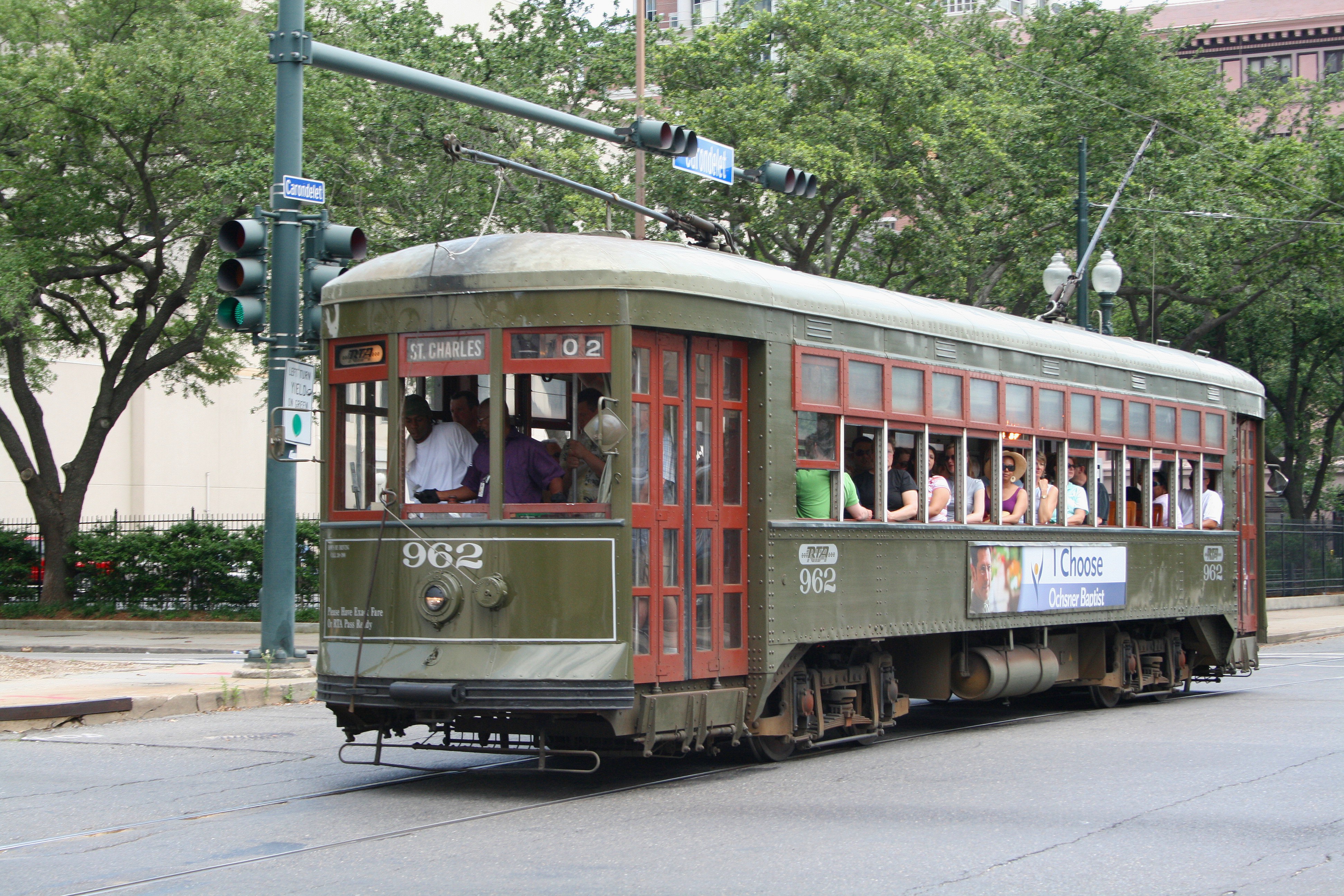|
Branford Electric Railway
The Shore Line Trolley Museum is a trolley museum located in East Haven, Connecticut. Incorporated in 1945, it is the oldest continuously operating trolley museum in the United States. The museum includes exhibits on trolley history in the visitors' center and offers rides on restored trolleys along its track as the Branford Electric Railway. In addition to trolleys, the museum also operates a small number of both trolleybuses and conventional buses. The museum encompasses the Branford Electric Railway Historic District, which was added to the U.S. National Register of Historic Places in 1983. History The museum was incorporated in August 1945 as the Branford Electric Railway Association (BERA), a non-profit historical and educational institution. The Connecticut Company (or ConnCo), which operated most of the streetcar lines in the state of Connecticut, had been making plans since the early 1930s to abandon its "F" route, cutting it back in stages from its long-time terminus ... [...More Info...] [...Related Items...] OR: [Wikipedia] [Google] [Baidu] |
Seashore Trolley Museum
Seashore Trolley Museum, located in Kennebunkport, Maine, United States, is the world's first and largest museum of mass transit vehicles. While the main focus of the collection is trolley cars (trams), it also includes rapid transit trains, Interurban cars, trolley buses, and motor buses. The Seashore Trolley Museum is owned and operated by the New England Electric Railway Historical Society (NEERHS).Young, Andrew D. (1997). ''Veteran & Vintage Transit'', pp. 43–48. St. Louis: Archway Publishing. . Of the museum's collection of more than 350 vehicles, ten trolley, and railroad cars that historically operated in Maine were listed on the National Register of Historic Places in 1980, as Maine Trolley Cars. History Theodore F. Santarelli de Brasch and Osmond Richard Cummings were two of the founders of the museum, which was initially operated as the Seashore Electric Railway. Santarelli graduated from Harvard University and led the museum until he died in 1987; Cummings, a ... [...More Info...] [...Related Items...] OR: [Wikipedia] [Google] [Baidu] |
Massachusetts Bay Transportation Authority
The Massachusetts Bay Transportation Authority (abbreviated MBTA and known colloquially as "the T") is the public agency responsible for operating most public transportation services in Greater Boston, Massachusetts. The MBTA transit network includes the MBTA subway with three metro lines (the Blue, Orange, and Red lines), two light rail lines (the Green and Ashmont–Mattapan lines), and a five-line bus rapid transit system (the Silver Line); MBTA bus local and express service; the twelve-line MBTA Commuter Rail system, and several ferry routes. In , the system had a ridership of , or about per weekday as of , of which the rapid transit lines averaged and the light rail lines , making it the fourth-busiest rapid transit system and the third-busiest light rail system in the United States. As of , average weekday ridership of the commuter rail system was , making it the sixth-busiest commuter rail system in the U.S. The MBTA is the successor of several previous public a ... [...More Info...] [...Related Items...] OR: [Wikipedia] [Google] [Baidu] |
R17 (New York City Subway Car)
The R17 was a New York City Subway car model built by the St. Louis Car Company in 1954 for the IRT A Division. A total of 400 cars were built, arranged as single units. Two versions were manufactured: Westinghouse (WH)-powered cars and General Electric (GE)-powered cars. The first R17s entered service on October 10, 1955. Originally painted maroon red, the R17s subsequently received several different paint schemes, including bright red, platinum mist/blue, or plain white. The R17s were replaced by the R62As in the 1980s, and the final train of R17s ran on February 29, 1988. Some R17 cars were saved for various purposes, but most were scrapped. Description The R17s were numbered 6500–6899. They were one of three car classes purchased in the mid-1950s by the New York City Transit Authority to replace much of the pre-World War II IRT High-Voltage (Hi-V) rolling stock, which included the Gibbs cars, the Deck Roofs, and the Hedley Hi-V cars. The cars were single unit cars ca ... [...More Info...] [...Related Items...] OR: [Wikipedia] [Google] [Baidu] |
NYCTA
The New York City Transit Authority (also known as NYCTA, the TA, or simply Transit, and branded as MTA New York City Transit) is a New York state public-benefit corporations, public-benefit corporation in the U.S. state of New York (state), New York that operates public transportation in New York City. Part of the Metropolitan Transportation Authority, the busiest and largest transit system in North America, the NYCTA has a daily ridership of 8million trips (over 2.5billion annually). The NYCTA operates the following systems: *New York City Subway, a rapid transit system in Manhattan, the Bronx, Brooklyn, and Queens. *Staten Island Railway, a rapid transit line on Staten Island (operated by the subsidiary Staten Island Rapid Transit Operating Authority) *New York City Bus, an extensive bus network serving all five boroughs, managed by MTA Regional Bus Operations. Name As part of establishing a common corporate identity, the Metropolitan Transportation Authority in 1994 assigned ... [...More Info...] [...Related Items...] OR: [Wikipedia] [Google] [Baidu] |
PATH (rail System)
Port Authority Trans-Hudson (PATH) is a rapid transit system in the northeastern New Jersey cities of Newark, Harrison, Jersey City, and Hoboken, as well as Lower and Midtown Manhattan in New York City. It is operated as a wholly owned subsidiary of the Port Authority of New York and New Jersey. PATH trains run around the clock year round; four routes serving 13 stations operate during the daytime on weekdays, while two routes operate during weekends, late nights, and holidays. It crosses the Hudson River through cast iron tunnels that rest on the river bottom. It operates as a deep-level subway in Manhattan and the Jersey City/Hoboken riverfront; from Grove Street in Jersey City to Newark, trains run in open cuts, at grade level, and on elevated track. In , the system saw rides, or about per weekday in . The routes of the PATH system were originally operated by the Hudson & Manhattan Railroad (H&M), built to link New Jersey's Hudson Waterfront with New York City. The syste ... [...More Info...] [...Related Items...] OR: [Wikipedia] [Google] [Baidu] |
Hudson And Manhattan Railroad
Port Authority Trans-Hudson (PATH) is a rapid transit system in the northeastern New Jersey cities of Newark, Harrison, Jersey City, and Hoboken, as well as Lower and Midtown Manhattan in New York City. It is operated as a wholly owned subsidiary of the Port Authority of New York and New Jersey. PATH trains run around the clock year round; four routes serving 13 stations operate during the daytime on weekdays, while two routes operate during weekends, late nights, and holidays. It crosses the Hudson River through cast iron tunnels that rest on the river bottom. It operates as a deep-level subway in Manhattan and the Jersey City/Hoboken riverfront; from Grove Street in Jersey City to Newark, trains run in open cuts, at grade level, and on elevated track. In , the system saw rides, or about per weekday in . The routes of the PATH system were originally operated by the Hudson & Manhattan Railroad (H&M), built to link New Jersey's Hudson Waterfront with New York City. The syste ... [...More Info...] [...Related Items...] OR: [Wikipedia] [Google] [Baidu] |
PCC Streetcar
The PCC (Presidents' Conference Committee) is a streetcar (tram) design that was first built in the United States in the 1930s. The design proved successful in its native country, and after World War II it was licensed for use elsewhere in the world where PCC based cars were made. The PCC car has proved to be a long-lasting icon of streetcar design, and many remain in service around the world. Origins The "PCC" initialism originated from the design committee formed in 1929 as the "Presidents' Conference Committee", renamed the "Electric Railway Presidents' Conference Committee" (ERPCC) in 1931. The group's membership consisted primarily of representatives of several large operators of U.S. urban electric street railways plus potential manufacturers. Three interurban lines and at least one "heavy rail", or rapid transit, operator—Chicago Rapid Transit Company—were represented as well. Also included on the membership roll were manufacturers of surface cars (streetcars) and i ... [...More Info...] [...Related Items...] OR: [Wikipedia] [Google] [Baidu] |
Brooklyn And Queens Transit
The Brooklyn and Queens Transit Corporation (B&QT) was a subsidiary of the Brooklyn–Manhattan Transit Corporation that operated streetcars in Brooklyn and Queens, New York City, United States (as well as into Manhattan via the Brooklyn Bridge and Williamsburg Bridge). It was created in 1929 to operate these routes, which had previously been operated by the BMT directly; its operations were transferred to the New York City Board of Transportation in 1940, and to the New York City Transit Authority in 1956. Preservation A number of cars from the B&QT and its predecessor companies have been preserved. Several are in the Branford Electric Railway Historic District and one is at the Trolley Museum of New York. See also *List of streetcar lines in Brooklyn The following streetcar lines once operated in Brooklyn, New York City, New York, United States. History The history of surface line operation in Brooklyn is long and very complicated, and is best presented under one of the f ... [...More Info...] [...Related Items...] OR: [Wikipedia] [Google] [Baidu] |
Charles Joseph Van Depoele
Charles Joseph Van Depoele (27 April 1846, Lichtervelde, West Flanders, Belgium – 18 March 1892, Lynn, Massachusetts, US) was an electrical engineer, inventor, and pioneer in electric railway technology, including the first trolley pole. Biography Early life in Belgium Van Depoele was born as Carolus Josephus Vandepoele in Lichtervelde, Province of West-Vlaanderen, Belgium, the son of Pieter-Joannes Vandepoele, a furniture maker from Ghent, and his wife, Marie-Theresia Algoet. Three months after his birth, the family moved to Bruges. At a young age, he dabbled in electricity, and became so thoroughly infatuated with the subject that he entered upon a course of study and experiment in Poperinghe. In 1861, while at college, he produced his first light with a battery of forty Bunsen cells. Later, he moved to Lille, France, where he attended regularly the lectures and experiments of the Imperial Lyceum from 1864 to 1869. Move to the US In 1869 he moved to the United States and ... [...More Info...] [...Related Items...] OR: [Wikipedia] [Google] [Baidu] |
August Belmont, Jr
August Belmont Jr. (February 18, 1853 – December 10, 1924) was an American financier. He financed the construction of the original New York City subway (1900–1904) and for many years headed the Interborough Rapid Transit Company, which ran the transit system. He also financed and led the construction of the Cape Cod Canal in Massachusetts, which opened in 1914. Belmont bought the land for and built New York's Belmont Park racetrack—named for his father—and was a major owner/breeder of thoroughbred racehorses. He served as chairman of the board of the Louisville and Nashville Railroad. He also served as a director of the Southern Pacific Co., parent of the railroad, and National Park Bank. Early life He was born in Manhattan, New York City, on February 18, 1853, to Caroline Slidell Perry and August Belmont Sr. His maternal grandfather was Commodore Matthew C. Perry. He graduated from St. Mark's School and was an 1875 graduate of Harvard University. At Harvard on th ... [...More Info...] [...Related Items...] OR: [Wikipedia] [Google] [Baidu] |
Interborough Rapid Transit
The Interborough Rapid Transit Company (IRT) was the private operator of New York City's original underground subway line that opened in 1904, as well as earlier elevated railways and additional rapid transit lines in New York City. The IRT was purchased by the city in June 1940, along with the younger BMT and IND systems, to form the modern New York City Subway. The former IRT lines (the numbered routes in the current subway system) are now the A Division or IRT Division of the Subway. History The first IRT subway ran between City Hall and 145th Street at Broadway, opening on October 27, 1904. It opened following more than twenty years of public debate on the merits of subways versus the existing elevated rail system and on various proposed routes. Founded on May 6, 1902, by August Belmont, Jr., the IRT's mission was to operate New York City's initial underground rapid transit system after Belmont's and John B. McDonald's Rapid Transit Construction Company was awarded ... [...More Info...] [...Related Items...] OR: [Wikipedia] [Google] [Baidu] |
Perley Thomas
Thomas Built Buses, Inc. (commonly known as Thomas) is an American bus manufacturer. Best known for its production of yellow school buses, Thomas produces other bus designs for a variety of usages. Currently, its production is concentrated on school buses and activity buses, along with their commercial derivatives. Founded in 1916 as Perley A. Thomas Car Works, the company was renamed in 1972 to better represent its primary product lines. Headquartered since 1916 in High Point, North Carolina, Thomas has been a subsidiary of Daimler Trucks North America (the parent company of Freightliner) since 1998. Prior to its acquisition, the company was operated by the Perley A. Thomas family, the final major school bus manufacturer operated under family control. Since 1936, Thomas has produced school buses in High Point, North Carolina. In addition to bus bodies, the company also produces vehicle chassis for its Saf-T-Liner/Transit Liner EFX and HDX buses. History Foundation The ol ... [...More Info...] [...Related Items...] OR: [Wikipedia] [Google] [Baidu] |





_(cropped).jpg)



